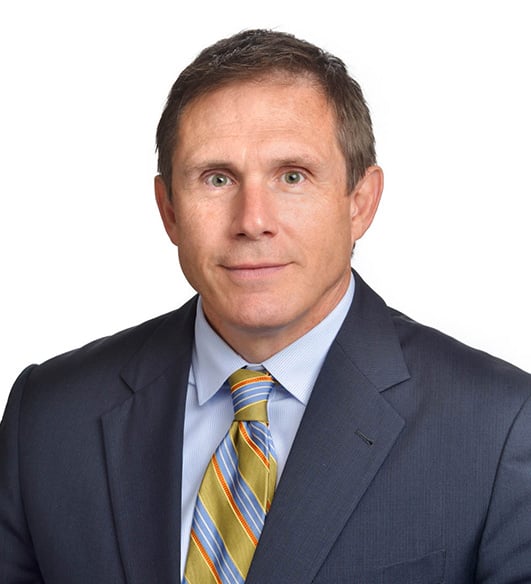Key Takeaways
- HIPAA compliance alone is insufficient to protect healthcare organizations from broader risks.
- To safeguard patients, employees, and operations, healthcare organizations need to embed HIPAA compliance within a larger risk management framework.
- Moving beyond a siloed approach allows for a better understanding of cumulative exposure and more effective prioritization of risks.
In healthcare, HIPAA compliance isn’t optional. It’s a legal requirement and a foundational component of protecting patient privacy and data security. But in today’s rapidly evolving threat landscape, compliance alone is no longer sufficient.
Relying solely on HIPAA — without integrating it into a broader risk management and performance strategy — can leave organizations exposed to a wide range of operational, financial, and technical risks.
Why Compliance Isn’t Enough Anymore
Meeting compliance standards may satisfy regulators, but it doesn’t guarantee resilience against modern cyber threats like ransomware, phishing attacks, or third-party vulnerabilities. Even the most compliant organizations are at risk if their approach is siloed, reactive, or inconsistent.
Consider these hidden vulnerabilities:
- Disjointed Risk Ownership: IT handles technical controls, HR manages employee training, and finance oversees vendor compliance. However, no one has full visibility into how these risks converge.
- Redundant or Conflicting Controls: When departments define and enforce security independently, inefficiencies and blind spots emerge.
- Inconsistent Data: Incompatible data and inconsistent assessments make it difficult to understand overall risk exposure and set clear priorities.
A siloed approach to risk management ignores risk's connected nature.
Transform HIPAA into a Strategic Opportunity
To truly safeguard patients, employees, and operations, healthcare organizations need to embed HIPAA compliance within a larger risk management framework. Doing so may also present new opportunities to elevate your organization.
Use HIPAA compliance as a launchpad to:
- Align digital health and telemedicine initiatives under the same risk governance used for patient data protection.
- Enable value-based contracting by demonstrating data integrity and risk readiness — two emerging payer requirements.
- Simplify governance in M&A and partnerships by showcasing a standardized, audited risk framework.
Embed Risk Silos Within a Unified Framework
Taking a comprehensive approach to risk management helps create a clear and unified process for identifying, assessing, and reducing risk across the organization.
The result is a shift from segmented compliance to coordinated resilience, including:
- Risk Inventory: Map out risks across IT, HR, revenue cycle, operations, and vendors.
- Risk Strategy: Establish a cross-functional risk management plan and outline a coordinated approach for managing risk.
- Single Source of Truth: Use integrated risk tools to visualize risk across domains. Use this data in cross-departmental meetings to openly discuss risk management strategies and insights.
- KRIs Over Checklists: Track metrics like vendor control cycles, breach drill outcomes, and policy refresh intervals. Use these metrics to monitor and adjust your risk management strategy continually.
Operational Efficiency Through Risk Integration
By reducing risks and improving operational efficiency, healthcare providers can achieve better outcomes in several key areas, including:
Proactive Issue Resolution
Early identification of breakdowns (e.g., delayed access, documentation errors, credential misuse) enables faster triage and less disruption.
Enhanced Coordination
Shared risk awareness builds a unified culture. Everyone — from intake staff to CFOs — understands their role in protecting data, operations, and care delivery.
Strategic Alignment
A mature risk posture accelerates readiness and gives partners, payers, and patients greater confidence.
Operational Resilience
Integrated risk planning ensures that clinical, technical, and administrative teams are prepared for and can recover from unplanned disruptions without compromising care.
Action Steps for Healthcare Leaders
For Technical Leaders
- Evaluate whether your EHR, telehealth platform, and vendors conform to enterprise-wide access controls and encrypted data requirements.
- Audit data-sharing workflows across IT, billing, and clinical systems to ensure consistent policy adherence.
For Operational Leaders
- Embed HIPAA-related controls (e.g., password hygiene, least privilege access) into clinical onboarding and training programs.
- Conduct annual tabletop exercises covering cyber incidents, privacy breaches, and revenue cycle disruptions.
For Financial Leaders
- Add vendor risk scoring — including data handling — to your financial diligence process.
- Tie risk KPIs (e.g., audit findings, vendor reviews) into operational dashboards used for strategic decision-making.
HIPAA as a Strategic Advantage
HIPAA provides a valuable compliance baseline, but it must be treated as just that: a baseline. Organizations that view HIPAA as merely a series of boxes to check miss the full opportunity to build resilient, efficient, and scalable healthcare operations.
By evolving HIPAA from an IT policy to a strategic risk instrument, healthcare leaders can maximize efficiency, enable growth initiatives, and strengthen clinical trust.
At Eide Bailly, we help healthcare organizations strike a balance between risk management and innovation. Our experienced advisors can elevate your organization’s security posture, maintain compliance, and gain a competitive edge.
The True Cost of Cyber Risk in Healthcare

Healthcare
We focus on the business of your healthcare organization so you can focus on your patients.
Risk Advisory Services
Who We Are
Eide Bailly is a CPA firm bringing practical expertise in tax, audit, and advisory to help you perform, protect, and prosper with confidence.



